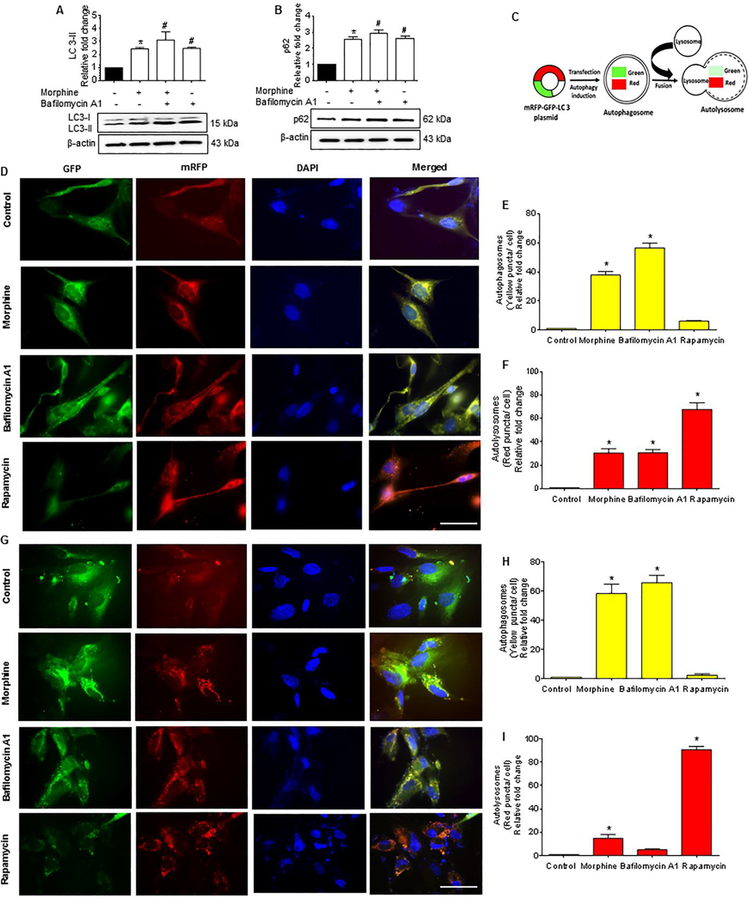Figure 3.
Morphine-mediated defective autophagy in human astrocytes. (A and B)Representative western blots showing protein levels of LC3-II (A) and p62 (B) in human A172 astrocytoma cell line exposed to morphine (500 nM) for 24 h followed by treatment with 400 nM BAF, which was added in the last 4 h of the 24 h treatment period. (C) Schematic representation of the mechanism of tandem fluorescent-tagged LC3 plasmid-mediated identification of the autophagosome fusion with the lysosome. (D) Representative fluorescent photomicrographs showing the LC3 puncta formation in human A172 astrocytoma cell line transfected with tandem fluorescent-tagged LC3 plasmid and treated with 500 nM morphine for 24 h, 400 nM BAF - last 4 h of the 24 h treatment period and 10 nM rapamycin for 24 h. (E and F) Quantitative analysis of yellow puncta (E) and red puncta (F) formation in different experimental groups of tandem fluorescent-tagged LC3 plasmid transfected human A172 astrocytoma cell line. (G) Representative fluorescent photomicrographs showing the LC3 puncta formation in HPA transfected with tandem fluorescent-tagged LC3 plasmid and treated with 500 nM morphine for 12 h, 400 nM BAF – last 4 h of the 12 h treatment period and 10 nM rapamycin for 12 h. (H and I) Quantitative analysis of yellow puncta (H) and red puncta (I) formation in different experimental groups of tandem fluorescent-tagged LC3 plasmid transfected HPA. Scale bar: 50 μM. β-actin was used as a loading control for all experiments. Data are presented as mean ± SEM; n = 6. Non-parametric Kruskal – Wallis One-way ANOVA followed by Dunn’s post hoc test was used to determine the statistical significance between multiple groups and Wilcoxon test was used to compare between two groups: *, P<0.05 vs control; #, P<0.05 vs. morphine.

